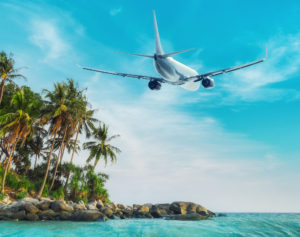
Ditching – An Emergency Water Landing
Is it safer to crash a plane on land or water? What are the chances of surviving a water landing?
These 2 questions come from Praveen Upadhyay.
Whether it would be safer to crash on land or water would depend on the choices available. If the misfortune happens near land and water, I would crash land on a dry, flat and hard surface.
If my choice is only the river amidst the high-rise buildings, I would opt for ditching. Ditching, in aviation lingo, simply means a controlled emergency water landing.
The survival rate during ditching on calm water is actually very high.
On January 15, 2009, an Airbus A320 operated by US Airways Flight 1549, ditched into the Hudson River in New York City due to bird strikes. The pilot successfully ditched the plane and all 155 lives were saved.
Ditching needs to be distinguished from water crashes. Where ditching is intentional, water crashes usually involve an uncontrolled flight at high speeds as seen in the hijacked Ethiopian Boeing 767 on 23 November 1996.
Here, the panicking hijacker fought with the pilots for control of the plane. It caused its wingtip to hit the water and it broke up, killing 125 out of 175 passengers.
When Flight 1549 landed on water, it remained on the surface for quite some time before slowly sinking due to a small leak.
On 15 August 2019, a Russian Airlines Airbus A321 with 226 passengers and 7 crew suffered a bird strike after taking off from the Moscow International Airport and crash landed. All on board survived, 74 passengers sustained injuries but none were severe.
The Russian pilot opted to make an emergency landing and decided to shut down both the engines just before touch down. Although the conventional wisdom for a crash landing on land is to leave the landing gears down to cushion the impact, the captain decided not to do so. Consequently, the plane landed hard but fortunately, it skidded safely over the cornfield.
The airline commended on the professionalism of the pilots and immediate comparisons were made between this accident and the one involving the US Airways.
Both flights had successful outcomes. The Russian Airbus A321 skidded on the flat cornfield at the end of the runway and the Airbus A320 ditched on the Hudson River with a smooth water surface.
I have successfully carried out a landing with both engines failed on a runway and an emergency water landing on an Airbus A330 flight simulator. In the ditching practice, it was conducted in good weather with clear visibility, no waves and a light wind. However, if in adverse conditions with large ocean waves or poor visibility, the outcome may be different.
As such, it’s difficult to say whether land or water is safer because every situation involves unique factors and choices. Water is going to be a better choice for a large airliner if it can find an area nearby that’s long or smooth enough just like on Flight 1549
See video on ‘How All Passengers Survived the Miracle on the Hudson’ here
See video on ‘Ural Airlines plane makes ‘miracle’ emergency landing’ here’
See video on ‘Hijacking Of Ethiopian Airlines Flight 961 Ends In Disaster’ here’